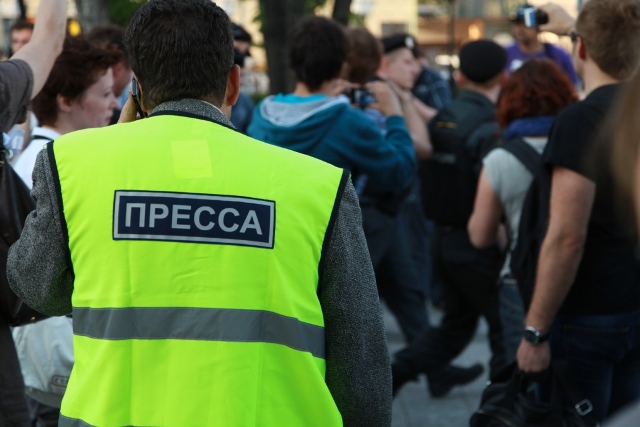As new Electronic Toll Collection system named Platon being put into operation, long-distance truck drivers from different regions of Russia set off to the Russian capital to paralyze the Moscow ring road traffic protesting against the tolls.
As new Electronic Toll Collection system named Platon being put into operation, long-distance truck drivers from different regions of Russia set off to the Russian capital to paralyze the Moscow ring road traffic protesting against the tolls.
The new road tax is collected (with a 20% commission – Forbes.com) by the system’s operator Igor Rotenberg, who is the son of Mr. Putin’s close friend Roman Rotenberg. The new system imposes toll on vehicles weighing more than 12 metric tons, which is 3,73 rubles per kilometer. According to NY Times’ counts, for an 800-mile round trip between Moscow and St. Petersburg there is an extra $33 at current exchange rates and will rise to $66 next March. Every owner of a truck has to register their car in the system (online or in the office). The toll is collected either with the help of a board device or by a special card. The vehicles are to be trucked by GLONASS (satellite system) throughout their way on federal highways.
NY Times reports truckers saying that the new toll amounted to about 10 percent of their revenue for each trip, and that it came on top of other hefty transportation taxes, sharply reducing their monthly wages of around $500 to $600. The government argues that the trucks cause significant road wear and says the tolls will generate more than $700 million a year to pay for maintenance. However,truckers mocked the idea that the toll money would end up being invested in Russia’s notoriously poor roads.
The protesting drivers from Saint Petersburg reached the Moscow region on Friday and came to stop at the “Mega” mall parking near Moscow. The actions were to start on Sunday, December 6th, as the most numerous protesters’ group of about 200 trucks from Dagestan region get to Moscow, but later declared to set the protest camp at Khimki, a town located to northwest from Moscow, as they failed to get to the Moscow ring road, one of the busiest and the biggest belt road around the city.
“They encouraged us to get engaged in small business, so we’ve bought the trucks, we’ve got wrapped around the credits and now Platon is killing our business! If we have to pay 30-40 thousands every month, it appears to be half of a truck driver income”, - Vladimir Matveev told Iliya Azar for Meduza.io. He also claims that 900 thousand trucks are still unregistered in Platon system and 600 thousand of these trucks belong to individual entrepreneurs.
During the first two weeks of the protests, the biggest demonstrations occurred in Dagestan, where more than 17,000 people went on strike, linking semi-trucks together in a row 57 kilometers (35 miles) long, tells Meduza.io. It was these protesters in Dagestan who first started talking about taking the demonstrations to Moscow. Around this time, representatives of the Ministry of Transportation and Dagestani local officials met with the truckers. The Federal Road Agency hurried to declare that the "crisis situation" had been "settled." Nevertheless, columns of cars and trucks set out for Moscow this past weekend.
In St. Petersburg, the decision to ride for Moscow was finally made on Saturday, November 28, after a meeting behind closed doors between truckers and Maksim Sokolov, Russia's Transport Minister. The meeting was closed to many in the movement who wished to attend, and even the people allowed in later told the press that Sokolov did not listen to them, refusing flatly to dismantle the Platon toll system.
For the most part, the truckers' protest is being organized at the local level, reports Meduza.io. This past weekend, demonstrations occurred in several regions throughout the country: in Kazan, Pskov, Izhevsk, Krasnoyarsk, and other cities. In both Nizhny Novgorod and Dagestan, police arrested roughly 40 drivers.







